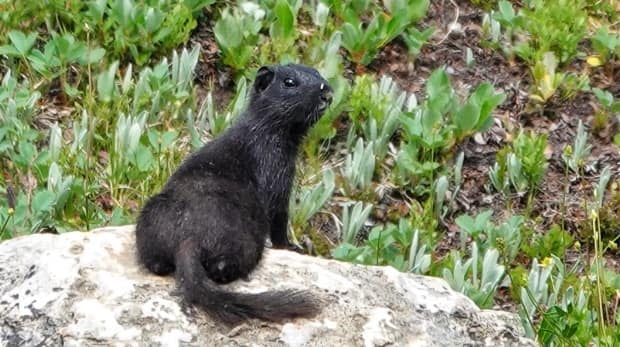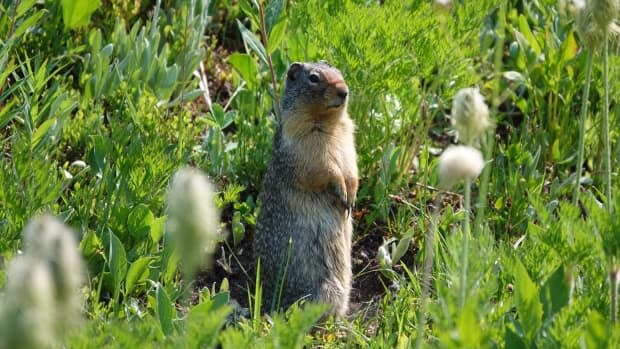Rare black ground squirrel spotted in Banff alpine area

Calgary naturalist Brian Keating was hiking in the Sunshine Meadows in Banff on Friday when he saw something unusual: a black Columbian ground squirrel.
"I thought it was a pine marten, then I thought it was a mink, but I was up in the alpine, so what's a mink doing up there?" Keating told The Homestretch on Monday. "I took a photograph of it and as soon as I looked at it I realized I had something pretty special."
A black squirrel might not seem like a big deal, considering their abundance in Calgary. But the "black squirrels" in the city aren't black squirrels at all, but Eastern grey squirrels with a genetic condition called melanism.
Tom Baines, the first curator of the Calgary Zoo, traded lion cubs to the Toronto Zoo in the 1920s in return for baby grey squirrels that exhibited melanism. It's caused by an over-development of melanin in the skin, which can turn animals, like the squirrels, completely or partially black.
"They were so unique and quite a curiosity that [Baines] brought them in and of course they reproduced like crazy and now they're out and running around all over the city," said Keating.
Melanism is the opposite of albinism and leucism — conditions that make animals white because of a lack of melanin.
In mammals, albinism occurs once in every 10,000 births. Melanism is even more rare, making Keating's squirrel sighting an exciting event. In fact, it might be a first for Banff.
Keating checked with Blair Fyten, a human/wildlife coexistence specialist with Parks Canada, who said that he's never seen or heard of a melanistic ground squirrel in Banff.
Advantage or hindrance?
For the young ground squirrel, unfortunately, this mutation probably isn't good.
"If the Columbian ground squirrel was a nocturnal animal, it would be an advantage," said Keating. "But of course, the Colombian ground squirrel is diurnal, a daytime animal. And so and when you look at the normal coloration of them, obviously that coloration has evolved for a very specific reason."

For other species, adaptive melanism can help them camouflage in their environment. Black panthers, for example, are leopards or jaguars born with melanism, which affects about six per cent of the world's big cats.
"In some areas, the black panther population of their melanistic form has become dominant because it served them so well, you can imagine, hunting at night," said Keating.
And the peppered moth of England is a great example of a species evolving.
During the time of the Industrial Revolution, when there was a drastic increase in air pollution, dark-coloured moths survived because they could hide better from predators on the now-sooty bark of trees. Before 1811, the dark-coloured form was not known, but by the end of the 19th century it outnumbered the original light-coloured moth.
Now as pollution has reduced, the non-melanistic population has grown again.

The black Columbian ground squirrel probably doesn't have such a bright future, said Keating. It's more conspicuous against the backdrop of rocks, mountain grasses and shrubs, putting it at a higher risk of predation.
If you've come across a black Columbian ground squirrel in the mountains, or a black Richardson's ground squirrel in the prairies and snapped a photo, let Keating know.
For more fascinating stories about Alberta's wildlife from naturalist Brian Keating, visit his website and check out these stories:
With files from The Homestretch.

 Yahoo Movies
Yahoo Movies 